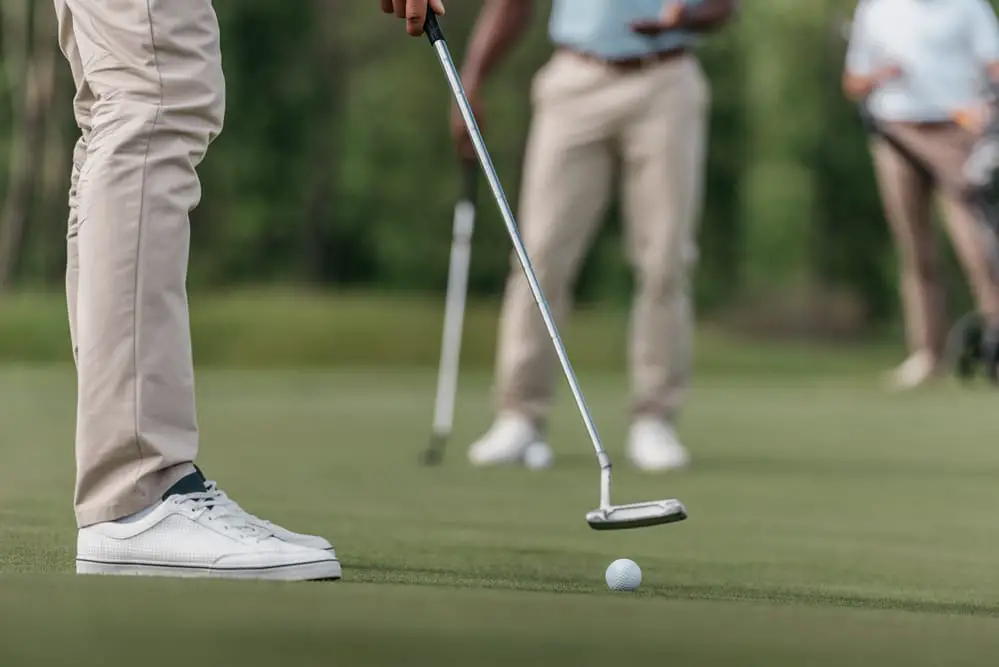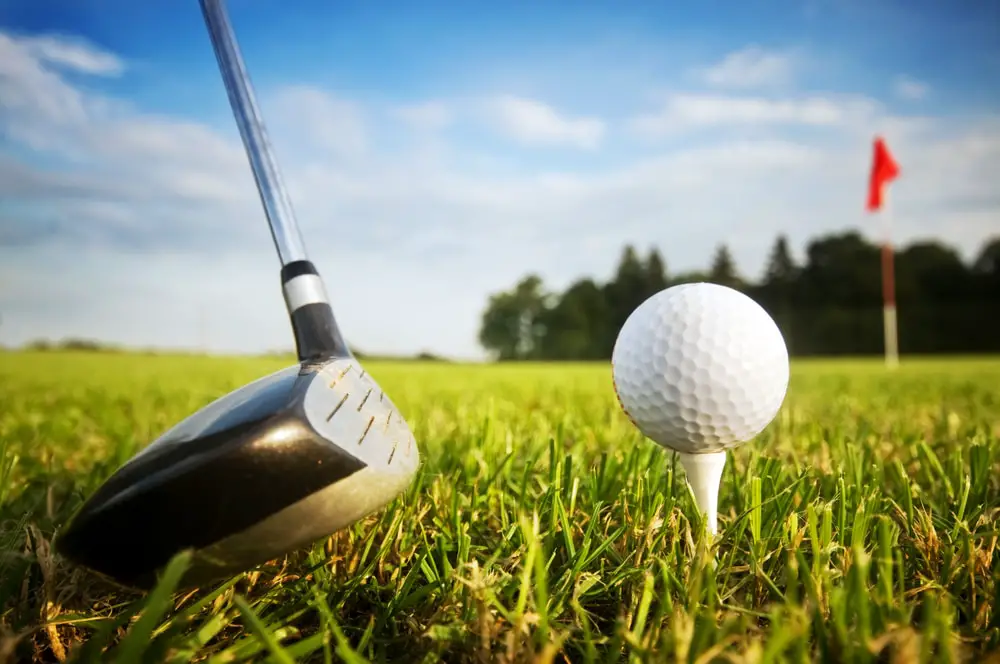Last Updated on October 17, 2023
Golf is a popular recreational sport that can be enjoyed by people of all ages and skill levels. Understanding the basics of how to tee off, or hit your first shot from the tee box, is essential for any golfer who wishes to improve their game. This article will provide an overview of the fundamentals associated with successfully teeing off, including stance, grip and swing technique. With knowledge of these basic elements in place, golfers can look forward to more successful rounds on the course.
The foundation of a proper tee-off begins with selecting the appropriate club for distance and accuracy. Factors such as wind speed and direction should also be taken into account when making this selection. Once chosen, it is important to maintain balance during setup while being mindful of ball position relative to feet placement. The correct grip should then be established, along with an appropriate posture that allows for an unimpeded downswing motion.
Finally, attention must turn towards developing a smooth swing path through impact in order to ensure maximum power transfer without sacrificing accuracy. Aspects like head movement throughout the swing are critical components enabling efficient contact between the ball and clubface. If done correctly, a positive outcome can be expected upon completion of the stroke sequence. In summary, mastery of basic techniques associated with teeing off allows golfers to maximize performance potential while minimizing errors due to poor technique or improper execution.
What Is The Purpose Of Teeing Off?
Teeing off is the first step in a golf swing and has an important purpose. The purpose of teeing off is to get the ball airborne and provide a better angle for hitting it farther down the fairway towards the green. Teeing off also allows players to hit their balls from a higher point, which gives them more control over where they want the ball to go. When teeing off, golfers must place their tees on or just behind the line that marks out the beginning of each hole. This helps ensure that all shots are taken from equal distances.

The height at which a player tees up can affect how far and straight their shot goes, as well as its trajectory. Higher tee boxes give more loft and greater distance than lower ones but may be harder to control due to increased wind resistance. Lower tee boxes offer less elevation, resulting in shorter drives with less spin but improved accuracy since there is less air friction against the ball. Therefore, selecting an appropriate tee box height is essential when teeing off and will depend on individual preferences and playing conditions.
Pre-Shot Preparation
Having a purpose of teeing off in mind is important, but having the right pre-shot routine and mental preparation is equally vital. Pre-shot preparations should be done with care to ensure that the golfer has the best chance of getting on the green. The following points will help golfers develop an effective pre-shot routine:
Mental Preparation
- Visualize how you want your shot to look like before striking it
- Address each ball confidently
- Have a positive attitude about yourself and your game
Club Selection
- Review all available clubs for this particular shot
- Select the club based on yardage from the hole and the amount of elevation changes needed
- Make sure the grip and stance are comfortable to use during swing motion
Physical Set Up
- Take time to decide where you would like the ball placed relative to the feet and shoulders position
- Place body into balanced stance while keeping head down throughout entire shot
These steps can help create an environment that allows golfers to focus on executing shots successfully. With consistent practice, these strategies will become second nature which leads to more accurate shots and lower scores.
Common Mistakes To Avoid
There are several common mistakes made when teeing off in golf. It is important to recognize these errors and practice avoiding them for successful drives.
| Mistake | Explanation | How to Avoid |
|---|---|---|
| Improper Stance | Standing too close or far away from the ball can lead to an ineffective drive. | Stand a comfortable distance away, with feet shoulder width apart. Make sure your weight is even on both feet before beginning your swing. |
| Incorrect Swing | Not allowing enough time for your backswing can result in incomplete shots or poor contact between the ball and the clubface. | Aim straight ahead with each swing, keeping the same pace as you move through the air. Keep your eye on the ball until after impact has been made with the clubface of the driver. Visualize where you want the ball to go and focus on hitting it there! |
Practicing Tee Shots

Practising tee shots is an important part of becoming a better golfer, as it allows golfers the opportunity to develop both their technique and accuracy. Golf tees are very versatile in that they can be used for various types of drills, such as working on aim or alignment, improving distance control, and honing various clubs. When practising with a golf tee, players should first make sure to pick up a practice golf tee which has a low centre of gravity so that the ball does not move when hit. Players should also ensure there is enough space around them to allow for adequate swing speed without worrying about obstacles getting in the way.
Golfers may choose from several different types of golf tee drills; these include impact bag drill, fairway bunker drill and iron shot drill. The impact bag drill helps players improve their contact point by placing an impact bag directly behind where the ball would be placed on the tee box. This simulates hitting off the turf and forces players to focus more on making solid contact with each strike. Fairway bunker drills involve hitting shots out of sand bunkers, while iron shot drills require aiming at targets located further away than usual range drives do. By focusing on specific techniques during each type of drill, players will be able to become even better at tee shots over time.
Conclusion
The tee shot is a crucial part of the game of golf and can often be the determining factor in how well one performs on a hole. The optimal height for teeing off, as well as what type of tees are best to use, varies based on club selection and individual preference. When using a driver, it is beneficial to tee the ball up slightly higher than when using other clubs such as irons or hybrids. Plastic tees may be better suited for longer holes, while wooden tees are preferred by some players for shorter shots. Proper stance alignment is also essential when positioning oneself to make a successful tee shot.
A balanced approach combined with knowledge about club selection and proper form can lead to more consistent results when taking a tee shot in golf. By practising regularly and perfecting each step involved in making an effective drive, all golfers have the potential to increase their performance out on the course and lower their overall scorecard numbers significantly.


